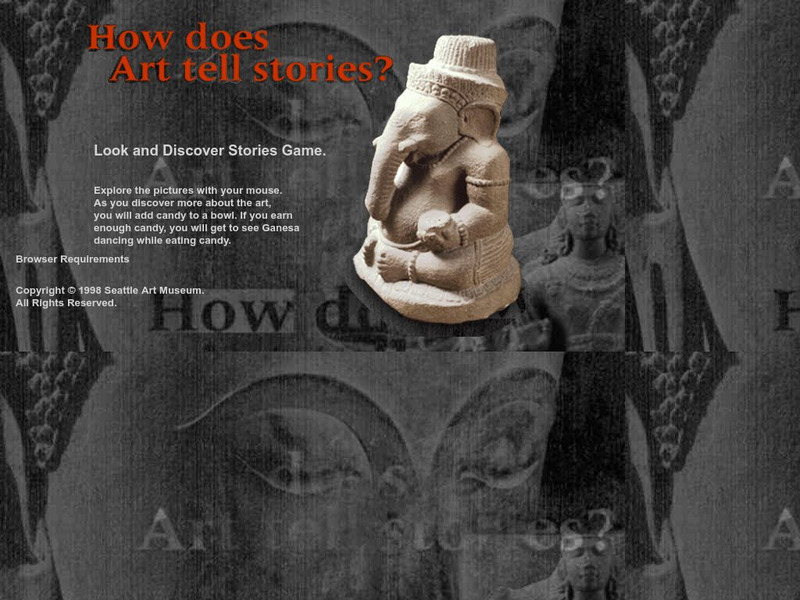Khan Academy
Khan Academy: Thunderbolt and Bell
The vajra (Tibetan: Dorjie) and bell (Sanskrit: ghanta; Tibetan: drilbu) are the most important ritual objects of Tibetan Buddhism. Most every lama has a pair and knows how to use them. They represent "method" (vajra) and "wisdom"...
Curated OER
Bbc Religions: Buddhism: Four Noble Truths: Standing Buddha
Representation of the Buddha, standing.
Purdue University
Representations of Buddhism in Ondaatje's Anil's Ghost
This scholarly text discusses Michael Ondaatje's "Anil's Ghost" as an examination of the complex relationship between religion, politics, and violence in Sri Lanka.
Curated OER
Wikipedia: Buddhism: Representation of the Buddha, Standing
Representation of the Buddha, standing.
Wikimedia
Wikipedia: Vajrayana
An article on Vajrayana, one of the three Buddhist routes to enlightenment. The article includes the history of Vajrayana and its teachings, as well as information about its development in places beyond India, such as China, Japan, and...
Curated OER
Bbc Religions: Buddhism: Four Noble Truths: Wheel of Dharma
Representation of the wheel of dharma.
Other
How Does Art Tell Stories?
This lesson plan--for social studies or an art class studying the culture of India--features great clip art examples, resources for teachers, and a glossary of vocabulary words.
Khan Academy
Khan Academy: The Goddess of White Umbrella: Buddhist Deity Ushnisha Sitatapatra
The Goddess of the White Umbrella (the Buddhist deity Ushnisha-sitatapatra) is one of many powerful female deities. She manifests her power with her thousand heads, arms, and legs. She has eyes on the palms of each of her hands and soles...
Khan Academy
Khan Academy: Mandala of the Buddhist Deity Chakrasamvara
A mandala is a schematic diagram that portrays the sacred environment of a particular deity. The mandala is used by practitioners as a guideline for meditation. It helps people visualize the way in which they will restructure the world...
Khan Academy
Khan Academy: The Bodhisattva Avalokiteshvara
The main image in this painting is Avalokiteshvara (1), the Bodhisattva of Compassion. He is the principle patron deity of Tibet. He sits on a lotus throne upon a lunar disc. This god takes many forms, such as the Dalai Lamas of Tibet,...
Khan Academy
Khan Academy: The Buddhist Deity Mahakala as a Brahman
Mahakala Bramanarupa is one of over 70 different deities of the Mahakala type. These are wrathful deities particularly adept at quelling monsters and overcoming demons, whether they be outer, inner or secret. Some deities, such as...
Khan Academy
Khan Academy: Tibetan Thangka Painting (Sacred Pictures)
In Tibet, religious paintings come in several forms, including wall paintings, thangkas (sacred pictures that can be rolled up), and miniatures for ritual purposes or for placement in household shrines. Thangkas were commissioned for...
Khan Academy
Khan Academy: Cabinet for Storing Offerings
This black cabinet was once stored in the gongkhang of an unknown temple in Tibet. Forbidden to the uninitiated, the gongkhang is a special room set aside for the worship of wrathful deities, where only the initiated monks of the...
Khan Academy
Khan Academy: Prayer Wheel
Prayer wheels are an example of Buddhist technology. This technology allowed the faithful to multiply the number of prayers they expressed by millions. This is because prayer wheels are filled with copies of mantras (sacred spells...
Khan Academy
Khan Academy: Seated Amitabha Buddha (Amida Nyorai)
This sculpture shows Amitabha, identified as the Buddha of the Western Paradise. Read a brief history of Amitabha and the techniques used to make this sculpture.
Curated OER
Alliance of Religions and Conservation: What Do Buddhists Believe? Buddhist Monk
Buddhist monk, at study.














